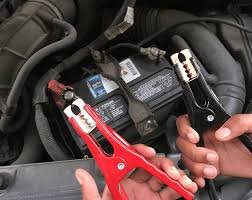
Jump Start Car Battery: Emergency Tips for Cold Weather
There’s nothing quite as frustrating as heading out on a chilly winter morning, turning the key, and hearing that dreaded click. A dead car battery is one of the most common cold weather issues drivers face, and it always seems to strike at the worst time. The good news? With the right tools and know-how, you can safely jump-start your car and be on your way in no time. This guide will walk you through emergency tips for handling a dead battery in cold weather and how to avoid it in the future.
Why Car Batteries Struggle in Cold Weather
Before we dive into how to jump-start a car in winter, it’s helpful to understand why batteries fail more often when it’s cold out.
Car batteries rely on chemical reactions to generate power. Cold temperatures slow these reactions, reducing the battery’s ability to produce the current needed to start your car. At 32°F (0°C), a battery can lose about 35% of its strength—and at 0°F (-18°C), it can lose up to 60%.
On top of that, your engine oil thickens in low temps, making the engine harder to turn over, which means your battery has to work even harder.
Emergency Jump-Start: What You’ll Need
If your battery dies, having the right equipment can make all the difference. Here’s what you’ll need to jump-start your car:
- A set of jumper cables
- A second vehicle with a good battery or a portable jump starter
- Protective gloves (optional but recommended)
- Safety awareness – Avoid working in traffic or icy areas when possible
Step-by-Step: How to Jump-Start Your Car in Cold Weather
1. Safety First
Make sure both vehicles are in park (or neutral for manual transmissions) with the parking brake engaged. Turn off both ignitions and all electrical systems (lights, radio, heater, etc.) to reduce battery load.
2. Locate the Batteries
Open the hoods of both vehicles. Locate the batteries and identify the positive (+) and negative (-) terminals. You might need to remove a plastic cover to access the terminals.
3. Connect the Jumper Cables
Attach the cables in the following order:
- Red clamp to the dead battery’s positive (+) terminal
- Red clamp to the donor battery’s positive (+) terminal
- Black clamp to the donor battery’s negative (-) terminal
- Black clamp to an unpainted metal surface on the dead vehicle (like a bolt or engine bracket, not the battery)
This last step helps avoid sparks near the battery, which can be dangerous.
4. Start the Donor Car
Let it run for a few minutes to allow the dead battery to charge slightly.
5. Start the Dead Car
Try starting your car. If it doesn’t turn over immediately, wait another 2–3 minutes, then try again. Avoid cranking the engine repeatedly to prevent draining the donor battery.
6. Once It Starts
Let the revived car run for at least 15–30 minutes before shutting it off to recharge the battery. If it dies again soon after, the battery may need to be replaced.
7. Disconnect in Reverse Order
Remove the cables in the reverse order:
- Black clamp from the metal surface
- Black clamp from the donor battery
- Red clamp from the donor battery
- Red clamp from your battery
Be careful not to let the clamps touch each other during removal.
If You Have a Portable Jump Starter
These devices are lifesavers in cold weather. Simply connect the device’s clamps to your battery (red to +, black to -), turn the unit on, and try starting your car. Always follow the manufacturer’s instructions for safety.
Cold Weather Battery Tips: Prevention Is Key
Jump-starting your car gets you out of a jam, but prevention is even better. Here’s how to protect your battery from cold weather failure:
1. Check Your Battery Health
Have your battery tested before winter hits. Most auto shops offer free tests. If it’s over 3–5 years old, consider replacing it.
2. Clean the Terminals
Corrosion can interfere with the connection. Clean your terminals with a wire brush and baking soda/water solution.
3. Park Indoors When Possible
A garage, even if unheated, keeps your battery warmer than being fully exposed to outdoor temperatures.
4. Unplug Accessories
Always unplug chargers and turn off lights when the car’s off. In cold weather, even minor drains can make the difference between starting and stalling.
5. Use a Battery Warmer
In extremely cold regions, a battery warmer or engine block heater can help your vehicle start easier.
6. Drive Regularly
Cars left sitting for days in cold weather are more likely to have dead batteries. A quick 15-minute drive helps keep your battery charged.
When to Replace the Battery
If your battery needs frequent jump-starts, struggles even in mild temperatures, or shows signs of swelling or leaking, it’s time for a replacement. A healthy battery is your best defense against winter car troubles.
Conclusion
Dealing with a dead car battery in freezing weather is stressful, but knowing how to handle the situation can keep you safe and get you back on the road faster. Keep jumper cables or a portable starter in your car, and remember these emergency cold weather tips to avoid getting stranded. And most importantly—don’t ignore the signs of a failing battery. A little preparation goes a long way when the temperatures drop.
